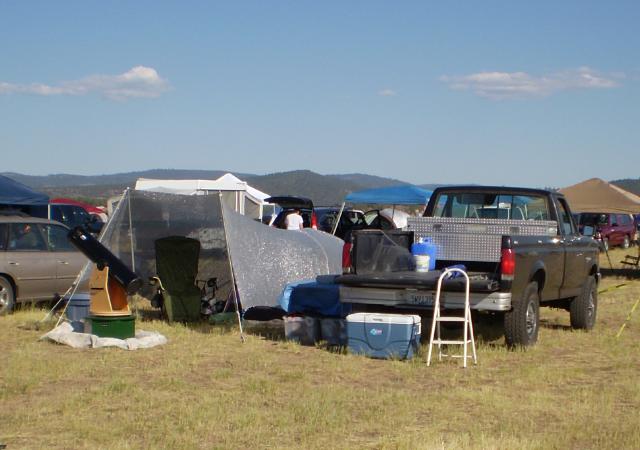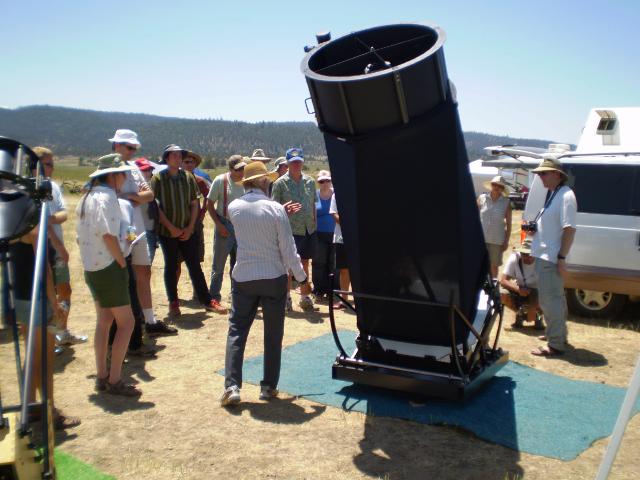The summer is flying by. I just got back from the 2010 Golden State Star Party (GSSP) up in Adin, California. Adin is a great little town, and the local people are super nice. GSSP is held on a few acres of Albaugh's Frosty Acres Ranch. The organizers do a great job of turning an empty cow pasture into a self contained astronomy encampment for four nights. The skies are incredibly dark. The site is on a bit of a rise in the middle of the "Big Valley", so you can see house lights some miles away. Once you realize how far away they are an just look up, you can practically read by the light of the Milky Way.
Here's a shot of my camp, complete with Orion 8" dob.

It's nice and cozy. The Aluminet provides much needed shade, especially when trying to sleep in after a long night of observing.
The problem is that there are some seriously big telescopes there: .
.
This one is a custom made 30" telescope. I can't really call it a dob, since money appeared to be no object in its construction. It is an alt-az mount, completely motorized and computerized for go-to operation. I left feeling quite inadequate in the aperture department. I wonder how much I can get away with spending on a bigger telescope before the spouse complains....
I'll be headed to Yosemite with the Sonoma County Astronomical Association in about a week. More great camping with telescopes!
Cheers,
Keith
Here's a shot of my camp, complete with Orion 8" dob.

It's nice and cozy. The Aluminet provides much needed shade, especially when trying to sleep in after a long night of observing.
The problem is that there are some seriously big telescopes there:
 .
. This one is a custom made 30" telescope. I can't really call it a dob, since money appeared to be no object in its construction. It is an alt-az mount, completely motorized and computerized for go-to operation. I left feeling quite inadequate in the aperture department. I wonder how much I can get away with spending on a bigger telescope before the spouse complains....
I'll be headed to Yosemite with the Sonoma County Astronomical Association in about a week. More great camping with telescopes!
Cheers,
Keith



 Calendar
Calendar




